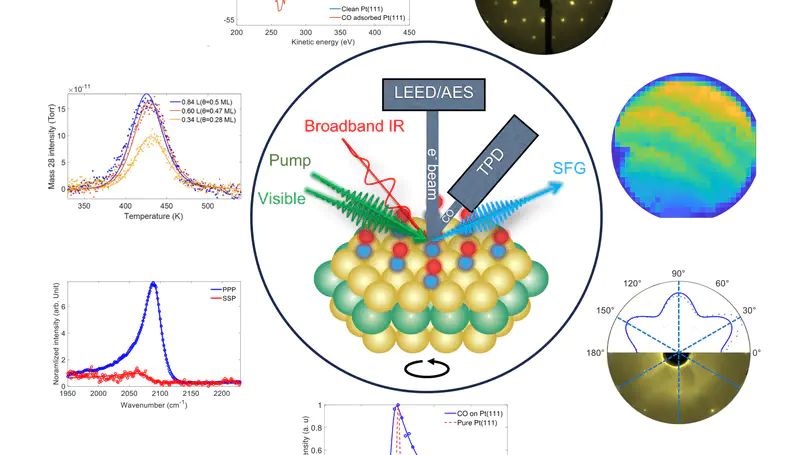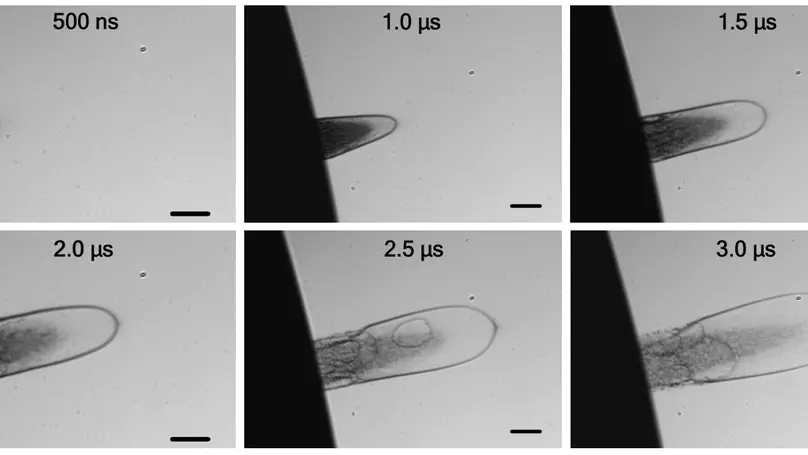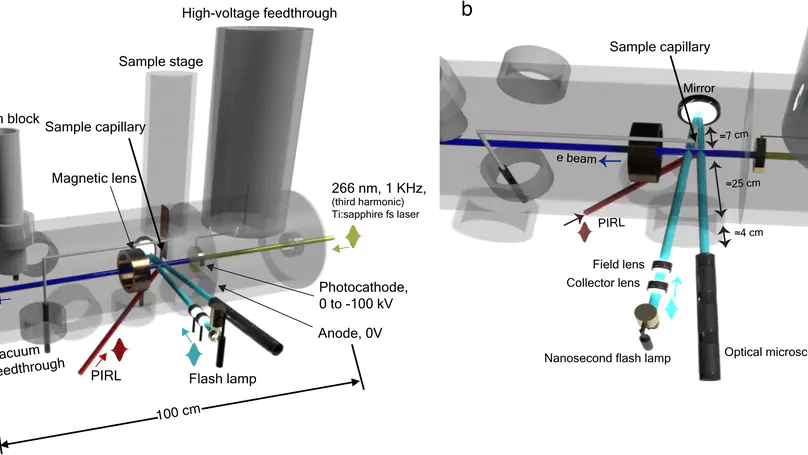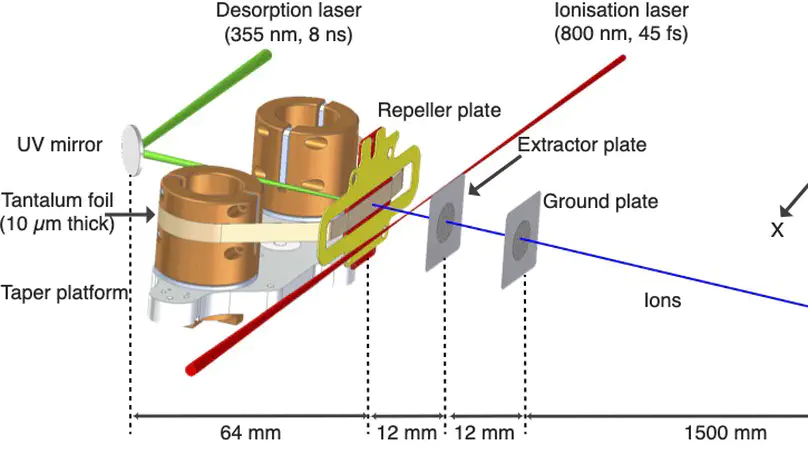Publications

In this contribution, we reported the development of an ultra-high vacuum setup that integrates conventional surface science techniques with azimuthal and polarization-dependent, femtosecond time-resolved sum-frequency generation spectroscopy and scanning sum-frequency generation microscopy. With a series of proof-of-principle measurements of CO adsorbed on Pt(111) and of the clean Ag(111) surface, we demonstrate that the setup offers 34 fs temporal resolution to perform time-resolved SFG spectroscopy, sufficient manipulator stability to perform scanning SFG microscopy on ~40 μm length scales, and flexible sample rotation to perform azimuthal-dependent SFG spectroscopy. This setup allows for the full characterization of the nonlinear susceptibility under equilibrium and femtosecond optically excited non-equilibrium conditions, as well as temperature control and sample preparation/characterization of conventional UHV setups.

Upon deformation, Newtonian fluids are expected to exhibit viscous behavior, and only when deformed on very short timescales, below the molecular diffusion time of a single molecule, is a solid-like elastic response expected. We have revealed a strong, rubber-like elasticity in the Newtonian fluid glycerol by analyzing the dynamics of a laser-driven free surface bubble. Not only do we find an elasticity persistent for four orders of magnitude longer than the diffusion time but also observe tolerance to large deformations only found in rubber-like materials. Our observations are independent of surface tension and require the existence of a transient state with solid-like long-range correlations different from the bulk state. This invites us to revisit our understanding of the liquid state.

